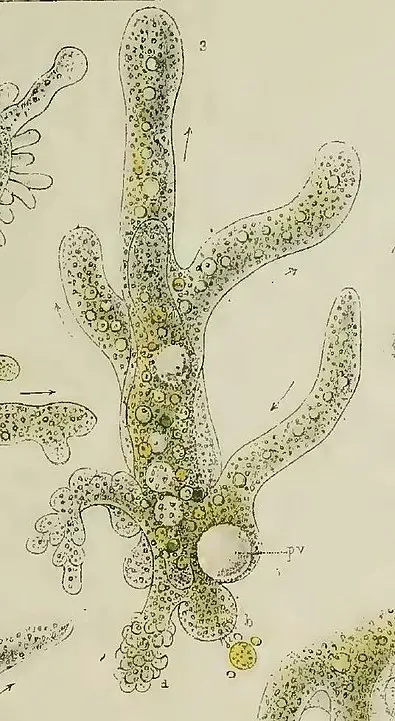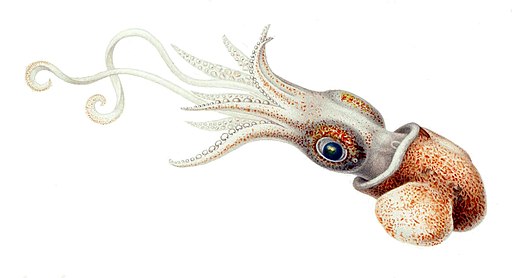Phylum Sarcomastigophora
** Definition, Classification/Characteristics
Definition: What is Phylum Sarcomastigophora?
Sarcomastigophora is a phylum of the kingdom Protista that consists of a wide variety of unicellular and colonial organisms. Members of this group move by means of one or more flagella or pseudopods. However, some species have been shown to alternate between amoeboid and flagellate stages during the different stages of their life cycle.
A majority of species in this group are free-living and can be found in aquatic environments across the world. Some also exist as parasites of animals and plants and are capable of causing disease.
* The name Sarcomastigophora comes from a combination of the words "Sarcodina" and "Mastigophora" which are characterized under the phylum.
Some of the species that belong to the phylum Sarcomastigophora include:
- Gonyaulax catenella
- Noctiluca sp.
- Globigerina sp.
- Trypanosoma equiperdum
Classification of Sarcomastigopohora
· Kingdom: Protista - Eukaryotic organisms (unicellular) that are not classified as plants, animals or fungi.
· Subkingdom: Protozoa - Single-celled eukaryotes that either exist as parasites or as free-living organisms
· Phylum: Sarcomastigophora
· Classes: The phylum Sarcomastigophora is further divided into two sub-phyla that include:
* In some books, Sarcodina and Mastigophora is ranked as superclass rather than sub-phyla.
Sarcodina
Also referred to as the amoebas in some books, the sub-phyla Sarcodina consists of over 13,500 species that move and feed by means of pseudopodia. For this reason, cytoplasmic streaming can be observed during locomotion or when the organism is gathering food (or environmental matter like mineral particles).
For a majority of arenaceous species, cytoplasmic streaming, which results in the formation of pseudopods allows them to select and collect the appropriate particles for shell construction. For planktonic sarcodinads, these temporary structures (pseudopods) serve to capture and even dismember larger prey (e.g. copepods).
While some of the species have an outer shell covering the cell body (e.g. in Rhizopods), others exist as naked amoebae (e.g. Amoeba proteus). The general morphology has also been shown to influence where given organisms are found.
Whereas naked forms are commonly found in freshwater, the majority of those surrounded by mineralized tests are found in marine environments where they either exist as marine benthic or planktonic organisms.
Some of the other characteristics of Sarcodina include:
- Naked amoebas have a contractile vacuole
- Some of the species have an ectoplasm/hyaloplasm located beneath the plasma membrane and surrounding the granuloplasm/endoplasm
- Pseudopodia vary in appearance (cylindroid, hemispheroid, fan-shaped etc)
- Some species are flagellated at a given stage of their life cycle
- Some species (e.g. some members of Entamoeba) are parasitic and can be found in the digestive tract of human beings and other animals; Free-living species feed on bacteria, protozoa, algae, and rotifers, etc
Reproduction
Asexual Reproduction
In Sarcodina, asexual reproduction through binary fission is the primary mode of reproduction. For the most part, this has been shown to occur through simple binary fission where the cell divides to produce two daughter cells.
In this type of reproduction, the plane of division is not easily recognized. In some species, reproduction is through multiple fission. Here, the nucleus undergoes repeated divisions resulting in a multinucleate organism. The cytoplasm is then cleaved with the parent body ultimately breaking open to release more than two daughter cells.
Sexual Reproduction
Sexual reproduction is not common for many of the species under the subphylum Sarcodina. However, it has been shown to occur through a process known as conjugation in some species. During conjugation, two mating types of the same species (referred to as conjugants) join temporarily and exchange nuclear/genetic material.
Unlike binary fission, this mode of reproduction does not necessarily result in the multiplication of the organism. Rather, it allows for nuclear and hereditary combinations. As a result, new genetic traits are passed down to new generations through binary fission.
Mastigophora
Unlike the subphylum Sarcodina, which use pseudopods for feeding and locomotion, members of the subphylum Mastigophora (particularly the trophozoite forms) are characterized by the presence of flagella (and are therefore also referred to as flagellates). While many of the species have a single flagellum, some species may have several flagella used for locomotion.
* The word "Mastix" is derived from a Greek word meaning whip-like.
* For members of this subphylum, the flagellum is particularly useful given that it allows them to move around more efficiently in their environment and invade new areas thus reducing competition within a given territory.
The majority of these species are parasitic in nature (e.g. Giardia lamblia, Trichomonas vaginalis, Leishmania and Trypanosoma) with a complex life cycle that requires two hosts for some of the species.
Some of the other characteristics of this subphylum include:
- Cell body is covered by a thin layer of cuticle/pellicle
- Nutrition may be holophytic, saprozoic or holozoic
- Majority of species have a single nucleus with only a few being multinucleated
- Have a contractile vacuole
- Some species can form pseudopodia at a given stage of their life
Reproduction
Longitudinal binary fission - Unlike simple binary fission in Sarcodina, binary fission in Mastigophora is through longitudinal binary fission. Here, cell multiplication starts with the duplication of genetic material through replication.
This is then followed by division of the cell (binary fission) along a longitudinal plane. For this reason, the plane of division is easily recognized among these organisms.
* In some of the species, sexual reproduction is suspected to occur through a process known as syngamy.
What does phylum mean in Biology?
Return to learning about Protozoology
Return from Sarcomastigophora to MicroscopeMaster home
References
Anderson O.R. (1988) The Flagellates (Phylum: Sarcomastigophora; Subphylum: Mastigophora). In: Comparative Protozoology. Springer, Berlin, Heidelberg
Jayaram Paniker. (2002). Paniker's Textbook of Medical Parasitology.
Orvil Roger Anderson. (1988). Comparative Protozoology: Ecology, Physiology, Life History.
Links
https://www.inaturalist.org/taxa/151880-Sarcomastigophora
Find out how to advertise on MicroscopeMaster!






